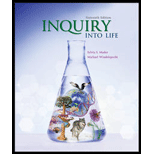
To analyze:
The difference between high heat capacity of water and high heat of vaporization.
Introduction:
Molecules are attached together by various forces. One of these forces is hydrogen bonding.
Hydrogen bonding is of two types:
- Intermolecular hydrogen bonding
- Intramolecular hydrogen bonding
Water is a universal solvent because it forms hydrogen bonding with most elements. It has a high heat of vaporization, and it has both cohesive as well as adhesive properties. When the water molecules stick together, this property is known as the cohesion property of water. An adhesion force is the force of attraction in which the water molecules attach to each other through hydrogen bonding.
Heat capacity (Cp): It is defined as the amount of heat required to raise the temperature of a given mass of a substance by one degree Celsius.
The heat of vaporization: It is also known as enthalpy or latent heat of vaporization, which is the amount of heat required by a liquid substance to change its state from liquid to vapor.
Want to see the full answer?
Check out a sample textbook solution
Chapter 2 Solutions
Inquiry Into Life (16th Edition)
- In the Sentinel Cell DNA integrity is preserved through nanoscopic helicase-coordinated repair, while lipids in the membrane are fortified to resist environmental mutagens. also provide pictures for this question.arrow_forward1. Explain how genetic information is stored, copied, transferred, and expressed. Also add some pictures for this question.arrow_forward!. Describe biological macromolecules (DNA, RNA, proteins, lipids, etc.) and how they function in the cell. also provide some images for this question.arrow_forward
- I need assistance with experienced tutor. Thanks.arrow_forwardH3C H Br-Br C=C H₂O H3C-CH2 CH3 (large excess)arrow_forwardmarvin dunham, a 68 year old male, is admitted to the hospital with a deep laceration to the forehead. dr. wallace applies a pressure dressing to his head to control the bleeding. what is the pcs codearrow_forward
- Explain the impact William B. Travis has made.arrow_forwardIf PCR was performed on the fragment of DNA shown below using "5'-TAGG-3" and "3'-TCTA-5'" as the primers, how many base pairs long would the PCR product be? To help with this, remember the antiparallel structure of DNA and that primers are complementary and antiparallel to the target sequence that they bind to. Hint: Check out the 5' and 3' labels....they are important! 3’- T A T C C G A C A A T C G A T C G A T T G C C T T C T A A -5’ 5’- A T A G G C T G T T A G C T A G C T A A C G G A A G A T T – 3’arrow_forwardWhen setting up a PCR reaction to act as a negative control for the surface protein A gene... Which primers will you add to the reaction mix? mecA primers, spa primers, mecA primers and spa primers, no primers What will you add in place of template? sterile water, MRSA DNA, Patient DNA, S. aureus DNAarrow_forward
- Draft a science fair project for a 11 year old based on the human body, specifically the liverarrow_forwardYou generate a transgenic mouse line with a lox-stop-lox sequence upstream of a dominant-negative Notch fused to GFP. Upon crossing this mouse with another mouse line expressing ectoderm-specific Cre, what would you expect for the phenotype of neuronal differentiation in the resulting embryos?arrow_forwardHair follicle formation is thought to result from a reaction-diffusion mechanism with Wnt and its antagonist Dkk1. How is Dkk1 regulated by Wnt? Describe specific cis-regulatory elements and the net effect on Dkk1 expression.arrow_forward
 Human Anatomy & Physiology (11th Edition)BiologyISBN:9780134580999Author:Elaine N. Marieb, Katja N. HoehnPublisher:PEARSON
Human Anatomy & Physiology (11th Edition)BiologyISBN:9780134580999Author:Elaine N. Marieb, Katja N. HoehnPublisher:PEARSON Biology 2eBiologyISBN:9781947172517Author:Matthew Douglas, Jung Choi, Mary Ann ClarkPublisher:OpenStax
Biology 2eBiologyISBN:9781947172517Author:Matthew Douglas, Jung Choi, Mary Ann ClarkPublisher:OpenStax Anatomy & PhysiologyBiologyISBN:9781259398629Author:McKinley, Michael P., O'loughlin, Valerie Dean, Bidle, Theresa StouterPublisher:Mcgraw Hill Education,
Anatomy & PhysiologyBiologyISBN:9781259398629Author:McKinley, Michael P., O'loughlin, Valerie Dean, Bidle, Theresa StouterPublisher:Mcgraw Hill Education, Molecular Biology of the Cell (Sixth Edition)BiologyISBN:9780815344322Author:Bruce Alberts, Alexander D. Johnson, Julian Lewis, David Morgan, Martin Raff, Keith Roberts, Peter WalterPublisher:W. W. Norton & Company
Molecular Biology of the Cell (Sixth Edition)BiologyISBN:9780815344322Author:Bruce Alberts, Alexander D. Johnson, Julian Lewis, David Morgan, Martin Raff, Keith Roberts, Peter WalterPublisher:W. W. Norton & Company Laboratory Manual For Human Anatomy & PhysiologyBiologyISBN:9781260159363Author:Martin, Terry R., Prentice-craver, CynthiaPublisher:McGraw-Hill Publishing Co.
Laboratory Manual For Human Anatomy & PhysiologyBiologyISBN:9781260159363Author:Martin, Terry R., Prentice-craver, CynthiaPublisher:McGraw-Hill Publishing Co. Inquiry Into Life (16th Edition)BiologyISBN:9781260231700Author:Sylvia S. Mader, Michael WindelspechtPublisher:McGraw Hill Education
Inquiry Into Life (16th Edition)BiologyISBN:9781260231700Author:Sylvia S. Mader, Michael WindelspechtPublisher:McGraw Hill Education





